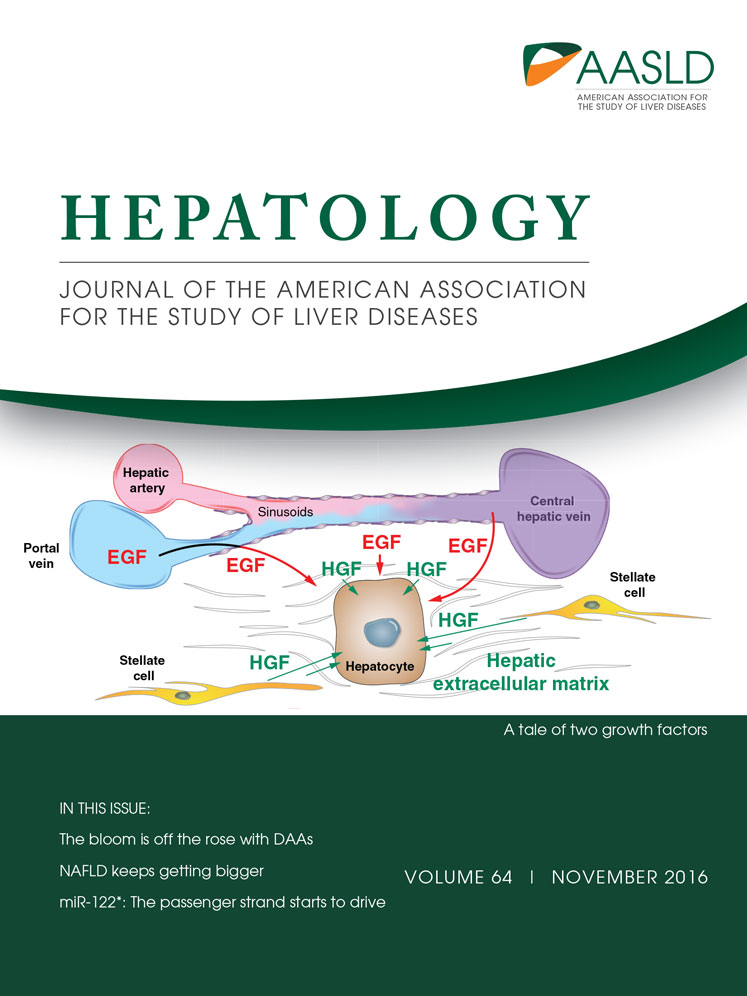Hepatitis C management in prisons: An insight into daily clinical practice in three major Italian correctional houses
Potential conflict of interest: Nothing to report.
We read with interest the Martin et al. article,1 and we are pleased that the scientific community is actively involved in this field. Studies on hepatitis C virus (HCV) infection in inmates are limited and further investigations are needed. Inmates are a high HCV prevalence population (3%-40%, with an unawareness rate up to 25%), with high rates of intravenous drug users (IDUs) and a substantial risk of HCV transmission during incarceration and after release. For this, treating HCV-positive prisoners should be a priority for both individual and public health. Poor adherence, psychiatric illnesses, toxicities, and legal issues have always impaired HCV treatment in prisons; the availability of highly effective, well-tolerated, short-course direct-acting antivirals (DAAs) would expand treatment eligibility for inmates. Most of the studies in correctional settings deal with HCV epidemiology or HCV treatment cost-effectiveness, but little is known about daily clinical practice. Beyond cost evaluations, the first aim of a prison physician should be to ensure to all prisoners the same health services available in the community, without any discrimination. All this considered, we would like to report our practical experience at Milano-Opera, Milano-San-Vittore, and Milano-Bollate Correctional Houses, three major Italian prisons that harbor an average of 3,400 inmates every year overall. Every new prisoner is proposed to undergo screening for purified protein derivative, human immunodeficiency virus, hepatitis B virus, HCV, and syphilis. The highest acceptance rate (90%) has been gained through prescreening and postscreening counseling, to increase awareness and reduce transmission risk. HCV antibody (HCVAb)+ prevalence is 10%. Seventy percent of HCVAb+ inmates are IDUs and 60% are HCV-RNA+. All HCV-RNA+ inmates undergo ID consultations, blood tests, HCV genotyping, ultrasonography, and FibroScan. The patient's motivation and legal issues are also considered. All motivated inmates with >3 months end of sentence and advanced liver disease are selected for DAA regimens (as recommended by Italian guidelines allowing DAAs only to F3-F4 patients). Motivated inmates with nonadvanced liver disease, HCV genotype 2 or 3, and no contraindications are treated with pegylated interferon (Peg-IFN)+ribavirin. At present, we have treated 29 inmates with DAA regimens (58% of the eligible patients), with 85% sustained virological response (SVR) rates and low discontinuation rates (6%); another 14% is under evaluation for treatment, but 28% of the eligible patients are still not treated. This is mainly attributed to transfer or release (Table 1). To reduce the number of lost-to-follow-up patients and improve the continuity of care after release, we have established networks with IDs, as well as hepatology and liver transplantation units, but we still have a long way to go. A stronger contribution by health administrators should be advisable. In conclusion, we agree with the authors, and we would like to highlight that, beyond costs, DAA regimens are a safe, short-duration treatment strategy in prisons. We need to dedicate further efforts to strengthen the continuity of care and improve HCV management in prisons for both individual and public health.
| Milano-Opera/Milano-San Vittore/Milano-Bollate Correctional Houses | N Patients (%), Overall |
|---|---|
| Inmates, N | 3354 |
| HCVAb+, N (%) | 314 (10) |
| Age, years, median (range) | 45 (19-71) |
| History of drug addiction, N (%)a | 213 (70) |
| CHC patients, N (%) | 191 (60) |
| HCV genotype, N (%)a | |
| 1a + 1b | 93 (48) |
| 2 | 7 (4) |
| 3 | 50 (26) |
| 4 | 19 (10) |
| Ongoing or not available, N (%) | 23 (12) |
| F3/F4 fibrosis patients, N (%) | 50 (30) |
| F3/F4 fibrosis treated patients, N (%) | 29 (60)b |
| F4/F4 fibrosis not treated patients, N (%) | 21 (40) |
| Reasons for treatment deferral | |
| Dropout before starting treatment (transfer to other prison or release in community) | 7 (33) |
| Lack of compliance | 4 (20) |
| End of sentence <3 months | 3 (14) |
| Under evaluation for treatment | 7 (33) |
- a Evaluations performed only on CHC patients.
- b 5 patients treated with Peg-IFN+ribavirin+telaprevir; 1 patient treated with Peg-IFN+ribavirin+sofosbuvir; 23 patients treated with DAAs with or without ribavirin (according to Italian guidelines).
- Abbreviation: CHC, chronic hepatitis C.
-
Antonella Foschi, M.D.1
-
Maddalena Casana, M.D.1
-
Anna Radice, M.D.1
-
Roberto Ranieri, M.D.1
-
Antonella d'Arminio Monforte, M.D., Ph.D.2
-
1Infectious Diseases Consultants
-
Milano-Opera, Milano-San Vittore
-
and Milano-Bollate Correctional Houses
-
ASST Santi Paolo e Carlo
-
University of Milan
-
Milan, Italy
-
2Infectious Diseases Unit Director
-
ASST Santi Paolo e Carlo
-
University of Milan
-
Milan, Italy




